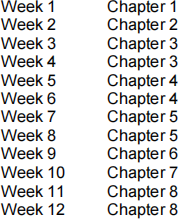关键词 > AP/ECON2500
AP/ECON 2500 3.0 Introductory Statistics for Economists I
发布时间:2021-09-05
Hello, dear friend, you can consult us at any time if you have any questions, add WeChat: daixieit
Faculty of Liberal Arts & Professional Studies
Department of Economics
Course: AP/ECON 2500 3.0 Introductory Statistics for Economists I
Term: Fall 2021
Course Description:
The purpose of the course is to introduce students to some fundamental statistical concepts and methods and their applications in economics. The course explains step by step how to use different statistical techniques to solve real-world problems. A great variety of examples lets students develop their statistical thinking and enhance their problem-solving skills.
Prerequisites: Grade 12U Advanced Functions or equivalent. Course credit exclusions: AP/ADMS 2320 3.00, AP/POLS 3300 6.00, AP/SOCI 3030 6.00, ES/ENVS 2009 6.00, GL/MATH/MODR 1610 3.00, GL/POLS/SOCI 2610 3.00, GL/PSYC 2530 3.00, HH/KINE 2050 3.00, HH/PSYC 2020 6.00, HH/PSYC 2021 3.00, SC/BIOL 2060 3.00, SC/GEOG 2420 3.00, SC/MATH 2500 3.00, SC/MATH 2560 3.00, SC/MATH 2565 3.00. Note 1: Acceptable course substitutes are available in the Calendar. Note 2: students who have taken SC/MATH 1131 3.00 may not take AP/ECON 2500 3.00.
Course Instructor:
Andrei Semenov, VH 1028
416-736-2100 Ext. 77025, [email protected]
Office hours: M 11:00 - 13:00, by e-mail
Time and Location:
Section B: TR 13:00 - 14:30
Section D: TR 14:30 - 16:00
Important Course Information:
This is an online course. There are no synchronous class sessions. The entire course, including participation/discussion and quizzes, will take place on eClass. Recorded lectures (PowerPoint slides with audio tracks) as well as all other course related information (course announcements, the information about quizzes and the final exam, etc.) will be posted on eClass or will be sent to you by e-mail. Check eClass and your e-mails regularly.
Course Evaluation:
Quizzes (4) - 60% (date TBA)
Final exam - 40% (date TBA)
Missed Quizzes and Exams:
There are no make-up quizzes, no weight transfer. If a quiz is missed, the mark for the quiz is zero. All students that miss the final exam are required to fill out the Deferred Standing Agreement form available at https://secure.students.yorku.ca/pdf/final-exam-assignment-deferred-standing-agreement.pdf. The completed Deferred Standing Agreement form must be submitted to the economics department to my attention within one week of the original exam date. The date and time of the deferred exam will be set at a later date. Students, who may require further extensions or accommodation, will have to submit a formal petition.
Course Readings:
Statistics for Business and Economics / James T. McClave, P. George Benson, Terry Sincich.- 13th ed., 2018, Pearson. Available at https://www.pearson.com/store/p/statistics-for-business-and-economics/P100000873571?format=
Student's Solutions Manual for Statistics for Business and Economics, 13th Edition / Nancy Boudreau, 2018, Pearson. Available at https://www.pearson.com/store/p/statistics-for-business-and-economics/P100000869492/9780134513034
Topics Covered:
Statistics, Data, and Statistical Thinking (Chapter 1): Types of Statistical Applications in Business. Fundamental Elements of Statistics. Types of Data. Collecting Data: Sampling and Related Issues.
Methods for Describing Sets of Data (Chapter 2): Describing Qualitative Data. Graphical Methods for Describing Quantitative Data. Numerical Measures of Central Tendency. Numerical Measures of Variability. Using the Mean and Standard Deviation to Describe Data. Numerical Measures of Relative Standing. Methods for Detecting Outliers: Box Plots and z-Scores.
Probability (Chapter 3): Events, Sample Spaces, and Probability. Unions and Intersections. Complementary Events. The Additive Rule and Mutually Exclusive Events. Conditional Probability. The Multiplicative Rule and Independent Events.
Random Variables and Probability Distributions (Chapter 4): Discrete Random Variables. Probability Distributions for Discrete Random Variables. The Binomial Distribution. Continuous Random Variables. Probability Distributions for Continuous Random Variables. The Normal Distribution. Descriptive Methods for Assessing Normality. Other Continuous Distributions: Uniform.
Sampling Distributions (Chapter 5): The Concept of a Sampling Distribution. Properties of Sampling Distributions: Unbiasedness and Minimum Variance. The Sampling Distribution of the Sample Mean and the Central Limit Theorem. The Sampling Distribution of the Sample Proportion.
Inferences Based on a Single Sample: Estimation with Confidence Intervals (Chapter 6): Identifying and Estimating the Target Parameter. Large-Sample Confidence Interval for a Population Mean. Small-Sample Confidence Interval for a Population Mean. Large-Sample Confidence Interval for a Population Proportion. Determining the Sample Size. Finite Population Correction for Simple Random Sampling.
Inferences Based on a Single Sample: Tests of Hypotheses (Chapter 7): The Elements of a Test of Hypothesis. Formulating Hypotheses and Setting Up the Rejection Region. Observed Significance Levels: p-Values. Large-Sample Test of Hypothesis about a Population Mean. Small-Sample Test of Hypothesis about a Population Mean. Large-Sample Test of Hypothesis about a Population Proportion.
Inferences Based on Two Samples: Confidence Intervals and Tests of Hypotheses (Chapter 8): Comparing Two Population Means: Paired Difference Experiments. Comparing Two Population Proportions: Independent Sampling. Determining the Required Sample Size.
Schedule of Readings: Below is the timeline for completing the course.

E-mail Policy:
When sending an e-mail, indicate the course number on the subject line. E-mail should not be used to receive private tutorial or extended answers to the questions on the course material.
Academic Honesty and Integrity:
In this course, we strive to maintain academic integrity to the highest extent possible. Please familiarize yourself with the meaning of academic integrity by completing SPARK's Academic Integrity module at the beginning of the course. Breaches of academic integrity range from cheating to plagiarism (i.e., the improper crediting of another's work, the representation of another's ideas as your own, etc.). All instances of academic dishonesty in this course will be reported to the appropriate university authorities, and can be punishable according to the Senate Policy on Academic Honesty.
All students are expected to familiarize themselves with the following information: Student Rights & Responsibilities, Academic Accommodation for Students with Disabilities.

